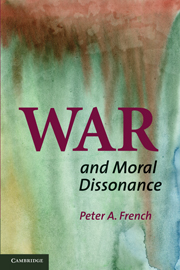Book contents
- Frontmatter
- Contents
- Preface
- 1 The Two-Collar Conflict
- 2 Our Better Angels Have Broken Wings
- 3 Responsibility for Innocence Lost
- 4 Virtuous Responses to Moral Evil
- 5 Assessing Attempts at Moral Originality
- 6 Public and Private Honor, Shame, and the Appraising Audience
- 7 Torture
- 8 Community and Worthwhile Living in Second Life
- 9 Of Merels and Morals
- 10 Inference Gaps in Moral Assessment
- 11 Blaming Whole Populations
- 12 The Moral Challenge of Collective Memories
- 13 Corporate Responsibility and Punishment Redux
- 14 Mission Creep
- Bibliography
- Index
5 - Assessing Attempts at Moral Originality
Published online by Cambridge University Press: 05 June 2012
- Frontmatter
- Contents
- Preface
- 1 The Two-Collar Conflict
- 2 Our Better Angels Have Broken Wings
- 3 Responsibility for Innocence Lost
- 4 Virtuous Responses to Moral Evil
- 5 Assessing Attempts at Moral Originality
- 6 Public and Private Honor, Shame, and the Appraising Audience
- 7 Torture
- 8 Community and Worthwhile Living in Second Life
- 9 Of Merels and Morals
- 10 Inference Gaps in Moral Assessment
- 11 Blaming Whole Populations
- 12 The Moral Challenge of Collective Memories
- 13 Corporate Responsibility and Punishment Redux
- 14 Mission Creep
- Bibliography
- Index
Summary
In the Tractatus Logico-Philosophicus, Wittgenstein remarks parenthetically, “Ethics and aesthetics are one and the same.” Within the structural framework he develops in the Tractatus, normative judgments cannot express propositions because there can be no value in the world of facts. Normative judgments are concerned with what “is higher” or what lies outside the accidental world of the facts. Consequently, there can be no normative facts, so normative judgments cannot be truth-apt. However, for Wittgenstein, the good or the bad exercise of the will “alters the limits of the world, not the facts, making it a different world for the happy man from the world of the unhappy man.” Ethics provides normative categories, such as good and bad, right and wrong, for assessing exercises of the will or the creations they produce. Aesthetics provides comparable categories for evaluating exercises of will (performances), creations, or works; but, it is generally held, it does so for altogether different reasons than ethics, hence, the provocative nature of Wittgenstein's remark.
Following Wittgenstein's lead, it would seem that ethics and aesthetics must either apply a different norm of correctness than the truth norm to assessments within their realms or adopt some version of an error theory to account for what in their assessments appear to be expressions of belief that have propositional content, a central claim identified with J. L. Mackie's account of ethics. Nishi Shah correctly describes the basis of Mackie's view with respect to moral discourse:
The objective purport of moral discourse requires that values be part of the fabric of the universe, but the universe, at least as it has been disclosed to us by the natural sciences, contains no such “queer” properties. Nor have the natural sciences disclosed any perceptual or other capacities that would allow us to detect the presence of such properties, even if they did exist.
- Type
- Chapter
- Information
- War and Moral Dissonance , pp. 125 - 142Publisher: Cambridge University PressPrint publication year: 2010



